Architects: Want to have your project featured? Showcase your work by uploading projects to Architizer and sign up for our inspirational newsletters.
There are many parallels between archaeology and architecture. Both disciplines are intimately concerned with human activity and material culture as well as the ways in which society evolves. While archaeologists record the artifacts, buildings and landscapes of past cultures, architects actively shape these elements to encapsulate modern values. Aiming to document cultural changes and promote understanding, archaeologists share architects’ desires to better understand human relationships and exchange. Coupling geography, anthropology and history, both disciplines explore what makes us who we are.
So what happens when the two fields collide? The following collection draws together 10 archaeology museums from the Architizer database, architecture built around the act of discovery and analysis. Geometric, tactile and crafted with precision, the projects are located throughout multiple countries in Europe. While some favor dramatic, expressive forms and monumental spaces, others frame architecture as the backdrop for the archaeological collection or site. Continuously unraveling to visitors as they explore, these museums reveal the past and celebrate the architecture of designed discovery:

© Frade Arquitectos

© Frade Arquitectos
National Archaeological Museum Remodeling and Museography by Frade Arquitectos, Madrid, Spain
Designed as a renovation and remodel, this project aimed to increase visitor utilization and public ease of use. The building’s grand patios were redone to bring back their original significances, and these spaces now exhibit the museum’s largest pieces.

© Amann, Cánovas y Maruri
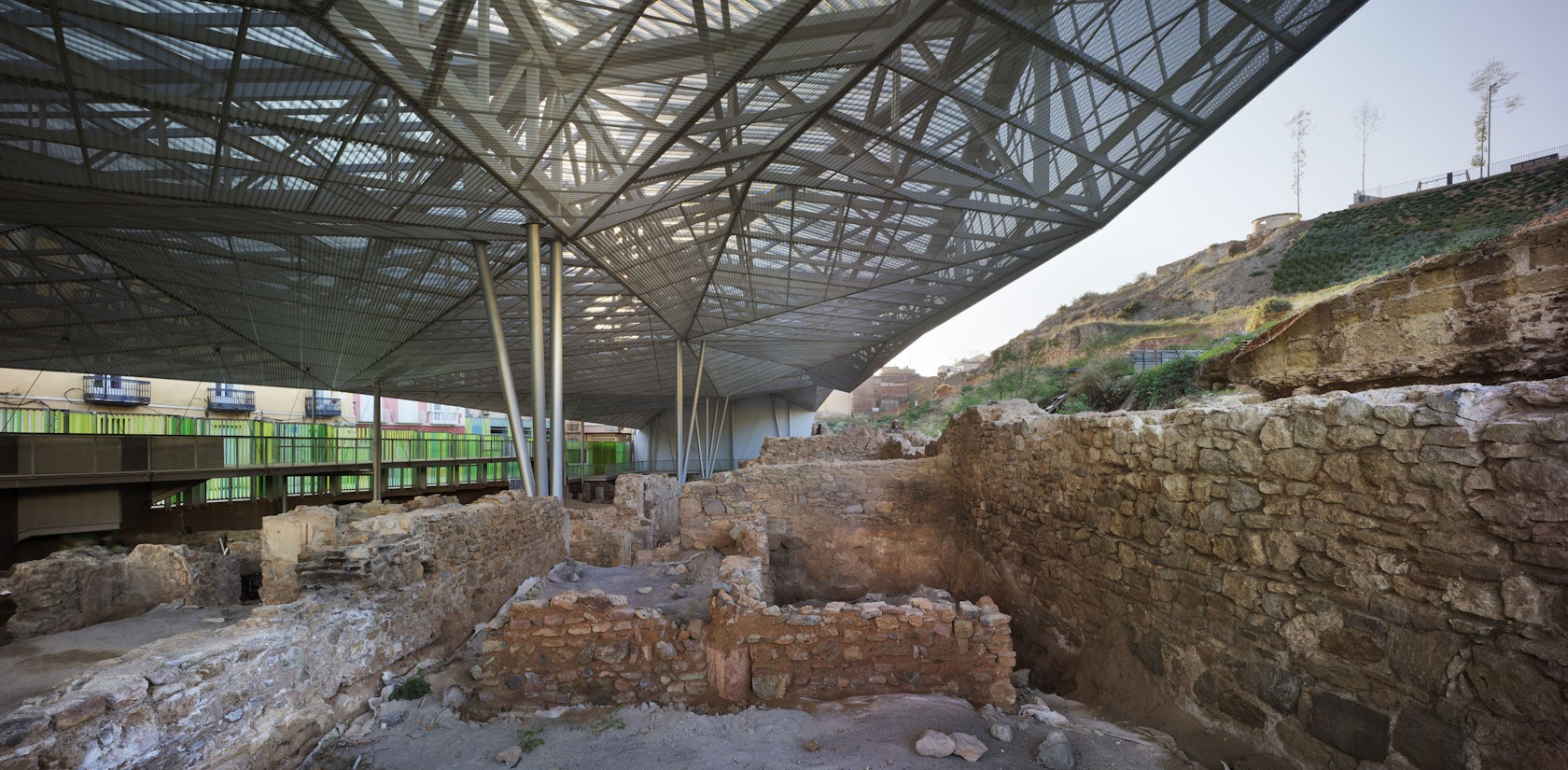
© Amann, Cánovas y Maruri
Cubierta de El Molinete by Amann, Cánovas y Maruri, Cartagena, Spain
Protecting the ruins of a Roman assembly, the Cubierta de El Molinete was designed as a transitional element between diverse urban conditions. Respecting the archaeological area while unifying it, the project uses a long-span structure to allow for a continuous perception of the site. Formed as an element that welcomes light, the structure uses modular polycarbonate sheets and perforated steel plates.

© Bernard Tschumi Architects

© Bernard Tschumi Architects
Alésia Museum and Archaeological Park by Bernard Tschumi Architects, Alise-Sainte-Reine, France
Tschumi’s Alésia Museum was created as two separate but related structures. The first building, the interpretive center, has been built at the historic Roman field position. This project was clad with wood, a circular building that includes a roof garden and a dual material language between exterior and interior space.
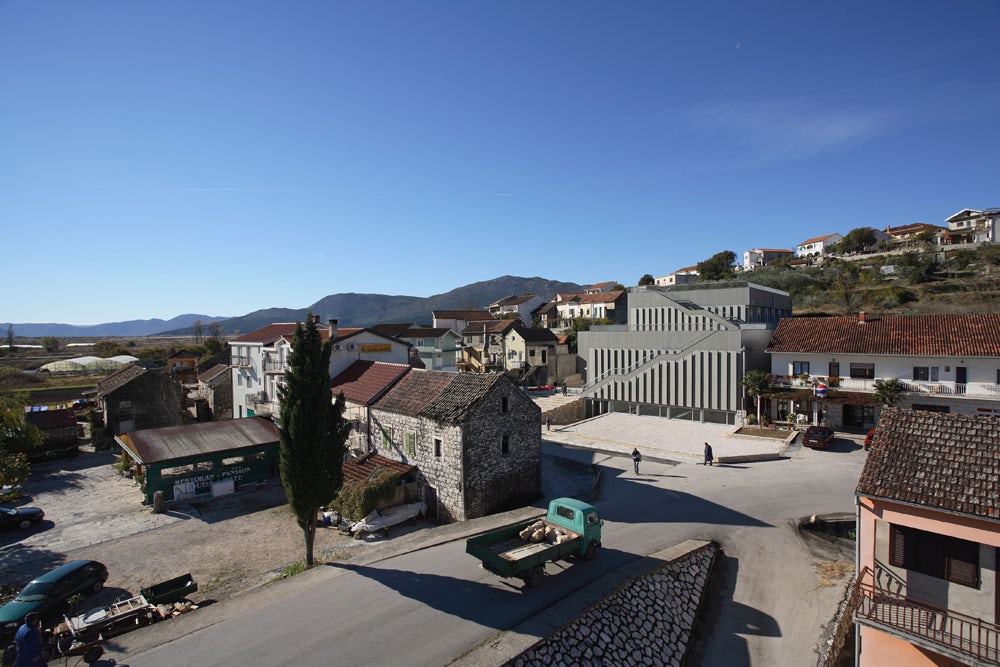
© radionica arhitekture
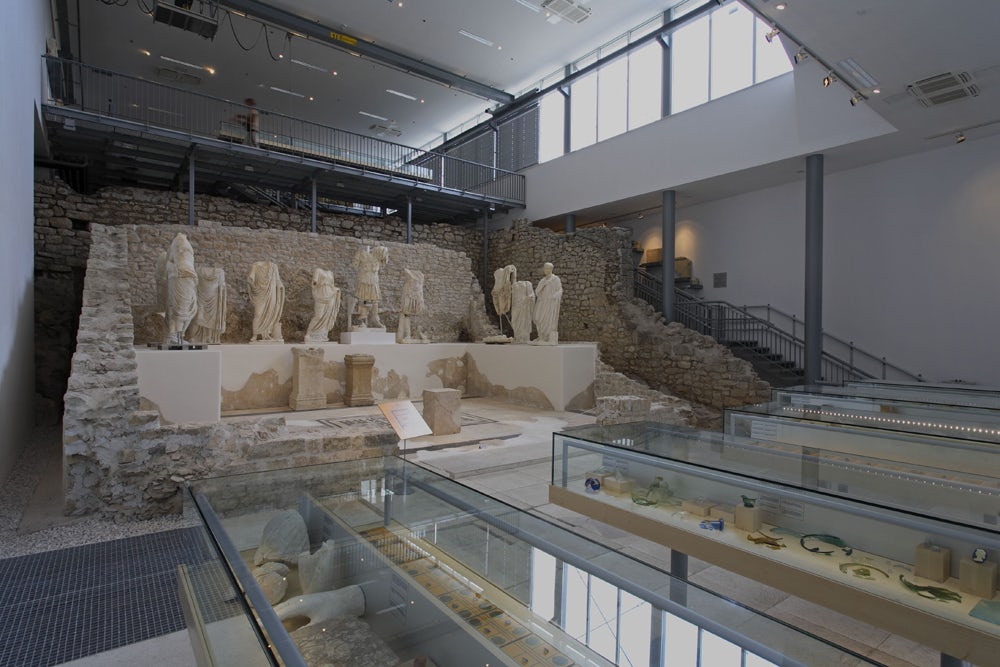
© radionica arhitekture
Narona Archaeological Museum by Radionica Arhitekture, Vid, Croatia
The Narona Archaeological Museum was built above the remains of the ancient temple of Augustus. Exploring scale and materiality, the museum was designed to respond to both its collection and its context. The project features a series of publicly accessible surfaces and ramps along its roof.
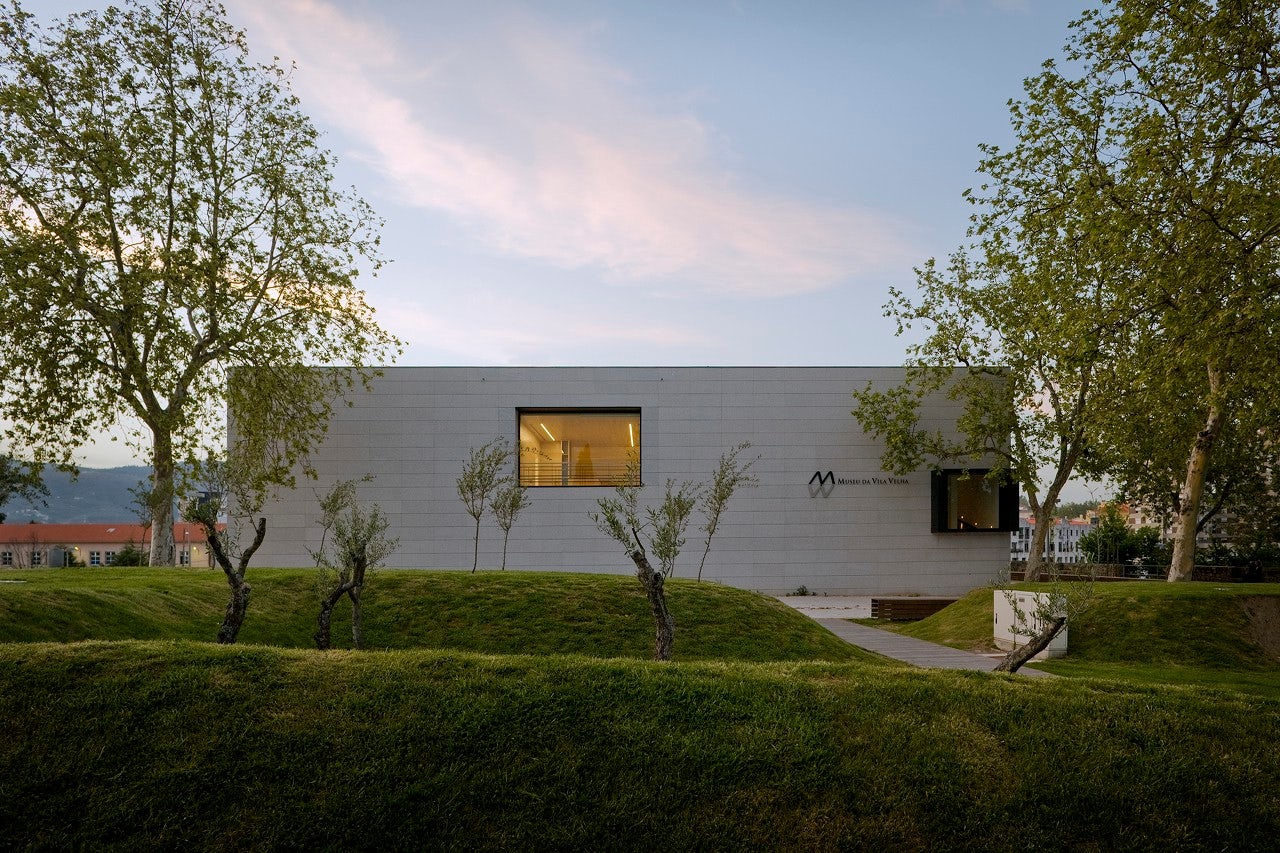
© Belém Lima Arquitectos

© Belém Lima Arquitectos
Vila Velha Museum by Belém Lima Arquitectos, Vila Real, Portugal
Located along a tranquil site in Vila Real, the Vila Velha Museum was designed as a simple box with articulated lines and surfaces. Warm interiors contrast the project’s stark gray façade, while careful detailing connects the project’s various planes and fenestrations.

© savioz fabrizzi architectes
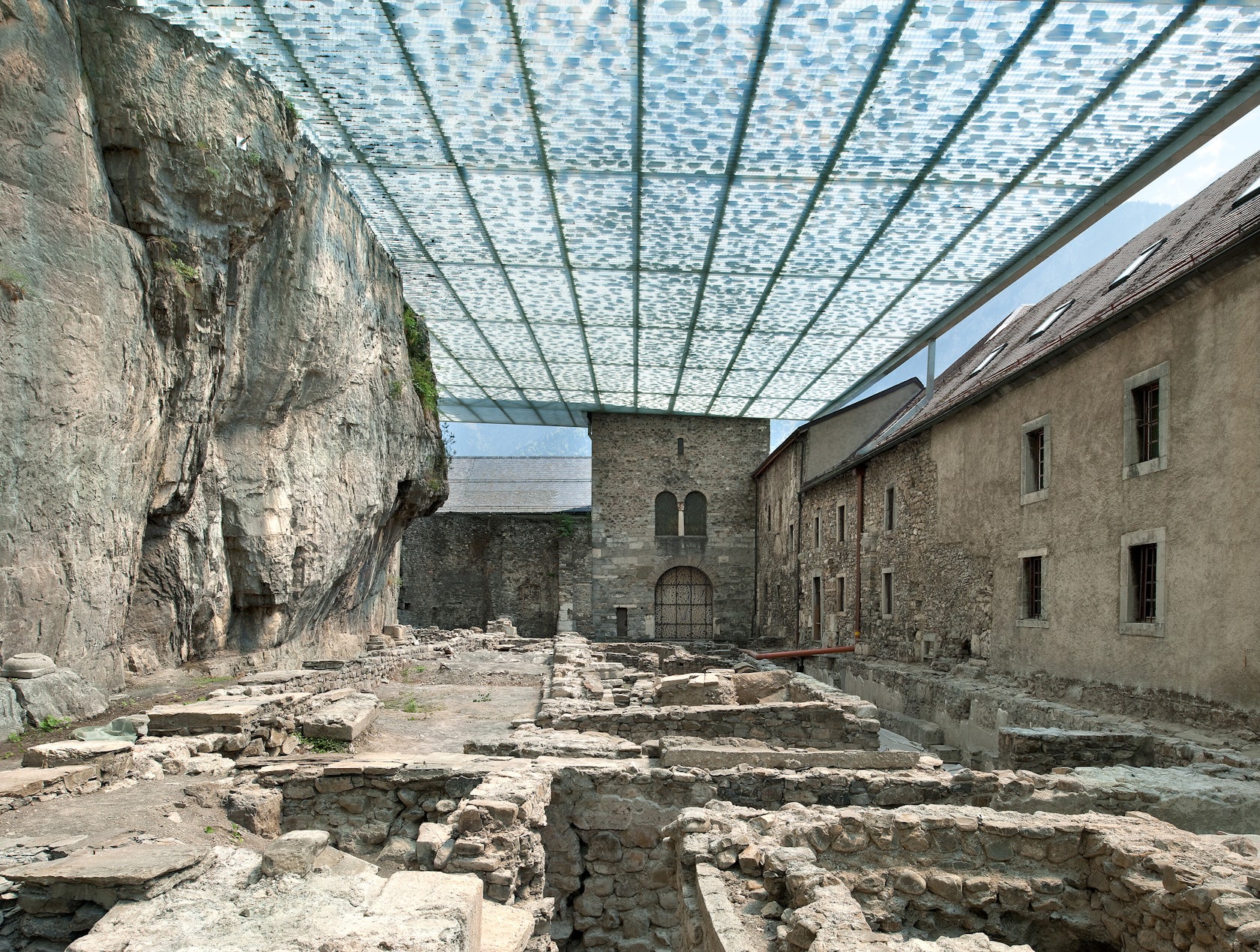
© savioz fabrizzi architectes
Coverage of Archaeological Ruins of the Abbey of St-Maurice by Savioz Fabrizzi Architectes, Saint-Maurice, Switzerland
Sited within the Abbey of Saint Maurice, this project aimed to explore the tension and danger of rock fragments falling to the archaeological site. 170 tons of stones were suspended above the remains, a ‘stone-roof’ that filters light and recalls the location’s past.

© Holzer Kobler Architekturen

© Holzer Kobler Architekturen
Nebra Ark – Visitor Center by Holzer Kobler Architekturen, Halle (Saale), Germany
Nebra Ark was designed to showcase a 3,600-year-old sky disk discovered on site. The public archaeological center and observation tower were designed to symbolize the region. Adopting the symbol of the solar barge, the project features a yellow, anodized aluminum façade, a planetarium and two exhibition rooms.

© Bernard Tschumi Architects

© Bernard Tschumi Architects
Acropolis Museum by Bernard Tschumi Architects, Athens, Greece
Tschumi’s Acropolis Museum was designed to delicately float above the archaeological ruins below. Housing some of the most significant Greek works, the museum unites collections formerly dispersed across multiple institutions.

© WilkinsonEyre

© WilkinsonEyre
Mary Rose Museum by WilkinsonEyre Architects, Portsmouth, United Kingdom
Wilkinson Eyre’s museum was built around a famous uncovered Tudor ship, the Mary Rose, within Portsmouth’s Historic Dockyard. Designed from the inside out, the project centers on the historic ship’s hull and its artifacts. Encasing both the ship and the largest collection of Tudor artifacts in the world, the museum was designed with a pure elliptical form derived from toroidal geometry.


© Martin Schubert
Moesgaard Museum by Henning Larsen Architects, Aarhus, Denmark
The Moesgaard Museum was located along the hilly landscape of Skåde. Designed as a visual landmark, the project includes courtyard gardens, underground terraces and a large, sloping green roof. Inspired by archaeological excavations, the museum was created as a varied and terraced landscape.
Architects: Want to have your project featured? Showcase your work by uploading projects to Architizer and sign up for our inspirational newsletters.

 0286MUVV | Vila Velha Museum
0286MUVV | Vila Velha Museum  Alésia Museum and Archaeological Park
Alésia Museum and Archaeological Park  Coverage of Archaeological Ruins of the Abbey of St-Maurice
Coverage of Archaeological Ruins of the Abbey of St-Maurice  Cubierta de El Molinete
Cubierta de El Molinete  Mary Rose Museum
Mary Rose Museum  Moesgaard Museum
Moesgaard Museum  Narona Archaeological Museum
Narona Archaeological Museum  National Archaeological Museum Remodeling and Museography
National Archaeological Museum Remodeling and Museography  Nebra Ark - Visitor Center, Observation Tower and permanent exhibition
Nebra Ark - Visitor Center, Observation Tower and permanent exhibition  NEW ACROPOLIS MUSEUM
NEW ACROPOLIS MUSEUM 


